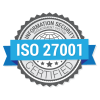We have reached a point where technology innovation has enabled an advanced new approach to procurement.
This has come at a crucial moment for enterprise companies, with organisations now routinely spending more money on technology services than on goods.
Massive complexity, poor data quality, and ineffective cataloging of contract and invoice information is causing companies to spend up to 30% too much on their services.
In this article, we will highlight the five key trends that are enabling a new era of intelligent procurement, from master data management (MDM) to knowledge models.
When leveraged together, these five capabilities will enable enterprise businesses to prioritize both value and service-levels intelligently and in real-time.
Master Data Management (MDM)
Master data management (MDM) has a central role to play in the future of procurement, primarily because it provides the ability to capture data from numerous sources simultaneously.
It also equips organisations to maintain a golden repository of accurate records, which is a crucial advantage given that poor data hygiene remains a widespread challenge.
The use case for MDM that has put it firmly at the top of our list is its ability to connect customer records from many sources.
For example, if you have multiple contact records, Salesforce, as well as sheets purchased from other providers, it is essential to be able to unify and group related customer information.
MDM technology creates a repository that is complete and provides full visibility to teams working with that data.
For procurement teams MDM is especially vital. This is because they have to interface with multiple different departments to procure large numbers of products and services, entailing numerous data sources and many suppliers.
While we are focusing on procurement in this article, MDM is set to be an important trend for all businesses looking to successfully achieve digital transformation.
The Power of Ontology
A knowledge base is a form of ontology, which can be described as a set of concepts and categories in a subject area or domain that shows their properties and the relations between them.
Academics have used this approach for decades, and Google is also essentially based on one.
By using an ontology, Google has been able to index a huge part of the internet and deploy knowledge in a common way, enabling users to rapidly find the information they need.
In summary, an ontology allows a user to get consistent answers to related questions, a capability that will be critical to the future of procurement.
Ontologies are valuable to enterprises and for advanced procurement because they provide a way of capturing domain knowledge across various sources.
This means that insights from various specialists, including examples like telecoms and retail specialists, can be connected into a central knowledge base.
Once this has been established, it can be used to generate consistent, accurate answers that contribute to enhanced decision-making.
Intelligent Document Processing
For ontologies and repositories to be established, it is essential that organisations can effectively and precisely extract the data itself from documents.
This is where intelligent document processing is required, which is well suited to handling the complex information contained in contracts and invoices.
Not only is intelligent document processing needed for extraction, but also to digitize the information once it had been taken from its various sources.
Intelligent document processing begins the process of advanced procurement, as it is required to extract key data before it is passed onto a knowledge model and MDM.
This sequence enables data to be filtered, stored, understood, and finally leveraged. Once the data has been prepared, it is ready to be analysed to unlock valuable insights that can lead to cost savings.
This is where procurement artificial intelligence (AI) and machine learning technologies have a critical role to play procurement transformation and spend analytics.
Procurement Artificial Intelligence and Machine Learning
Using MDM, a powerful knowledge base, and intelligent document processing in concert will equip organisations to get the most out of AI and machine learning technologies.
Once these technologies are deployed to analyse clean, categorized data, they are positioned to identify the most powerful and relevant results.
The power of AI and machine learning as part of this process is immense, enabling users to identify important trends that would otherwise be invisible.
In addition to identifying massive cost saving opportunities by interrogating contract and invoice data, the technologies can also be used to carry out tasks like risk assurance.
This summary paints a picture of the broad spectrum of services being offered by procurement start-ups today.
Another noteworthy advantage of using AI and machine learning technologies is their ability to grant improved negotiation insights.
This enables teams to have much better-informed negotiations with suppliers, bringing accurate information to a relationship that is often siloed and built on inaccurate data.
The combination of value-based negotiations with suppliers while still having a strong focus on cost-savings is highly advantageous, allowing enterprises to get a good price without sacrificing service levels.
Knowledge Model
A knowledge model is a master database that tethers together the MDM, the ontology, and the intelligent document processing.
It indexes the stored data in a way that helps the user to retrieve results. In a traditional SQL database for example, a programmer is required to translate concepts and ideas into code.
The traditional dynamic means that an individual who is fluent in the relevant coding language is a prerequisite to extracting answers to specific questions from the data.
This approach can be cumbersome, difficult to maintain, and can leave significant gaps in the stored information.
In a knowledge model, many of the inefficiencies associated with the traditional approach are erased.
For example, nodes and links are used to provide immediate access to a high level of transparency, providing customer, product and supplier information at a glance.
AI and machine learning technologies can then be deployed to interface with these nodes at speed, intelligently pulling together key insights and data to make predictions and inform better decisions.
Unlocking the Future of Procurement
The combination of these capabilities creates a system that empowers procurement teams in a number of ways.
On the one hand it prioritizes the maintenance of hygienic data to ensure the most meaningful insights are stored, while also making it easy to rapidly identify highly specific information and cost-saving opportunities.
In turn, this enables procurement teams to have more meaningful interactions with suppliers, rather than relationships with limited communication that are weakened by bad data.
Thinking Machine Systems has built a solution that comprises the five key trends listed in this article, combining them to offer an end-to-end approach to enhanced procurement.
At the core of our solution is a unique AI-driven Knowledge Model, which automates the process of identifying immediate and long-term cost-saving opportunities.
By working with us you can either equip your internal teams with the Thinking Machine Systems solution, or have act on your behalf. Check out our use cases to find out more, or take an interactive tour of our platform.


